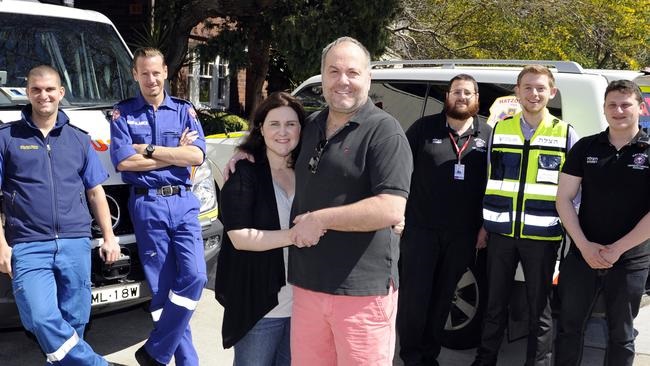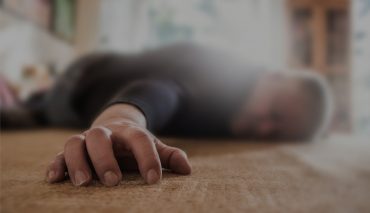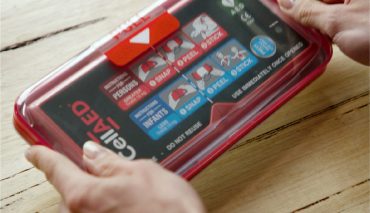A tale of two sudden cardiac arrests: Sarah’s story
Sarah Walke’s experience was the beginning of Donovan Casey and Erol Teber’s pursuit of a better way to respond to out-of-hospital cardiac arrest.
This event was not Sarah’s first run-in with sudden cardiac arrest. It was also not the first time Sarah had considered the need for an AED – but not for herself.
This is Sarah’s story.
When I suffered a sudden cardiac arrest at the age of 39, it wasn’t the first time my family was impacted by the world’s biggest cause of premature death.
I had just turned 19 when my grandmother, Ita Starkey died in my arms, in the restroom of a country railway station.
Nanna was in her early 70s and she was excited to be heading on a holiday to Queensland to see a close family friend. I was driving her to catch a train when, five minutes out, she started complaining of nausea and discomfort.
If I’d known at that point that heart issue symptoms present differently in women, I might have turned left and taken Nanna to the hospital. I didn’t; we continued on to meet the train.
At the station, I went into the restroom with her, she was confused and I helped her into a stall. She passed out on top of me.
I panicked, froze and began yelling for help.
There were others in the restroom but it took some time before someone responded; no-one came to our aid immediately. I remember someone saying “some lady’s having a turn in the toilet” and walking away.
It seemed like a long wait until an ambulance was called and arrived. They were unable to revive her.
I don’t remember much after that. Nothing had prepared me to recognise the signs and have the confidence to act. I took a passive role, waiting for emergency services to save her, but they arrived too late.
Cardiac arrest is confronting and can be complicated by location and bystander reactions. At the time, I did not recognise that Nanna was experiencing a sudden cardiac arrest. I was wrapped up in the indignity of the situation.
I felt very guilty after Nanna passed. I felt I had let her down, let down my mother and aunt and uncle. I felt I let myself down by not remaining calm and taking action, performing CPR.
I don’t feel as guilty many years later. I did not have the reinforced training, the confidence and the tools to help her. I had learned CPR at school but was not empowered to believe that CPR and defibrillation in the moments following cardiac arrest can make a difference to survival rates.
Fiji
The first time I considered buying an AED (automated external defibrillator) was when Donovan and I were living in the Fijian jungle.
We lived in Fiji for five years in a tiny but breathtakingly beautiful coastal resort community. We were deep in the wilderness, about 90 minutes away from the nearest hospital.
We lost quite a few friends to sudden cardiac arrest over that time. More than once, trucks and an ambulance overturned on the long, winding mountainous roads trying to reach our area.
At that time, I thought of buying an AED – not for me, but for Donovan.
I knew if something happened to us then, and we were totally reliant on an ambulance to help us, we wouldn’t survive it.
We eventually left Fiji and returned to Australia, partly because we were worried about our health.
About eight months after we resettled in Sydney, I had a sudden cardiac arrest.
Luck and perseverance
If Donovan wasn’t so stubborn and determined, it’s likely I wouldn’t be here today.
I was 39 years old when I had my sudden cardiac arrest.
I don’t remember much of the days prior. Like my grandmother, I was having non-typical symptoms. I had severe pain in one of my shoulders; it was bad enough that Donovan had been visiting chemists all weekend, looking for pain relief for me.
The first stroke of luck was that Donovan was right next to me when it happened.
Donovan has had a lot of experience responding to emergencies. His military experience, and his years running a skydiving business meant he was able to overcome the panic of seeing me struggling to breathe, and call Triple Zero for help.
The second stroke of luck was that there was already an ambulance just around the corner, and another two nearby. They all responded.
By the time the first walked in, Donovan was close to collapse. He’d been performing CPR for the 6 minutes it had taken the ambos to arrive, and he was exhausted.
I was asystole, or flatline. It took a team of paramedics over 30 minutes of them taking turns performing CPR to get a shockable rhythm, and revive me.
They might not have persevered for that long had Donovan not called my family members living nearby. They came around, and kept urging the paramedics to continue. They wouldn’t let them call it.
If those ambulances hadn’t been so close, the outcome could have certainly been different. It’s really hard to do CPR, especially on your own. You feel helpless, full of doubt. When you are on your own with someone suffering a cardiac arrest, there is little opportunity to seek out an AED if it is not very close by.
Donovan has been in lots of life-and-death situations. He knows how to think fast.
Hospital
I’m alive now because the paramedics were as stubborn as Donovan. They got my heart beating again, and they got me to the hospital.
At the hospital, I was lucky there was a gifted surgeon on duty, who put a stent in.
I was in a coma for two weeks.
While in a coma, the ICU doctors were not confident about my full recovery.
Donovan didn’t believe them. He kept fighting for me, and remained positive. And slowly, I started to come good again.
I was in rehab for six weeks; I had to relearn to walk again, it took some time before I was able to make memories. I don’t remember who came to visit and support me.
This all happened in 2014. Even now, there is damage to my heart muscle. I don’t respond well to exertion, or stress.
Realities and realisations
When I was eventually allowed to return home, we were amazed that I had survived.
Upon researching what had happened to me, I was shocked the sudden cardiac arrest survival rate was so low.
That was when we learned about the importance of AEDs, and why having one nearby is so important.
We learned that if you can shock a sudden cardiac arrest patient within the first few minutes, there may be less damage to the brain. Having an AED nearby means less post-morbidity risk.
We researched AED locator apps, that show you where your nearest public access defibrillator is.
But we also realised that even if there had been an AED in the lobby of our building, it wouldn’t have helped.
Donovan couldn’t leave me for the time it would’ve taken to fetch it. If he had, my chances of survival would have decreased further.
For an AED to be useful, it needs to be in the home.
RELATED ARTICLE: Why we invented CellAED
As someone with Type I Diabetes, the risk of me experiencing a sudden cardiac arrest was always higher than average.
Mine wasn’t an electrical event, it was a blockage. They call the event I had the widowmaker. I had a triple bypass the following year.
My father was in his early 50s when he had bypass surgery. Cardiac issues run in the family, on both sides. The added context for me was the type 1 diabetes since age 7.
For someone like me, having an AED in the house makes sense.
But it’s not something I ever considered seriously after we left Fiji, because I thought living in a city like Sydney, we could rely on the health system in an emergency.
I knew I was high risk. But I still didn’t think to get an AED. Part of the problem was that I wasn’t looking in that direction. I didn’t have any heart issues, and I was really young.
I’d had a few people in my school year lose young parents to sudden cardiac arrest. The impact was devastating for them.
I was surrounded by it. In retrospect, you would think I’d be more aware, especially being so high-risk. You would think I would be the first to get an AED.
I was extremely lucky to survive. Most people aren’t as lucky as I was. They don’t receive help in time.
Solving the problem
Donovan has a strong self-belief that he can solve complex problems.
He set himself to finding a solution after we realised that even a sophisticated health system like Australia’s couldn’t solve it.
We have since learned of the many studies into government funding of AEDs for the households of people at risk. They all say the same thing – yes, AEDs can be effective at improving chances of surviving sudden cardiac arrest, but no, the cost-benefit analysis of funding AEDs for every at-risk household does not stack up.
We also learned about places like Seattle, where ordinary people like us had realised health systems weren’t up to the challenge of solving this problem, and did something about it.
Now, the sudden cardiac arrest survival rate in Seattle is 62 per cent; globally, it is less than one per cent.
This is what got us thinking about how to get AEDs into people’s homes.
For that to happen, we knew we needed to make them much more affordable. And we had to make them easy to use.
Fast-forward to today, and the team Donovan and his partner, Erol Teber built, has done just that, with CellAED.
Thinking about others
With all the signs pointing to my own personal risk of sudden cardiac arrest, the only time I thought about buying one, was for Donovan.
An AED isn’t something you typically buy for yourself. It’s something you acquire for someone else, to save someone you love.
We know how lucky we are that I survived. Too many millions aren’t so lucky, every year.
For anyone who is worried something like this could happen to someone they love, here is my advice.
Learn how to do CPR, and how to recognise the signs of sudden cardiac arrest. Then, share that knowledge with the people around you.
These are the first critical steps toward being ready to help someone survive a sudden cardiac arrest.
I’m alive today because Donovan did that for me.
RELATED ARTICLE: CellAED obtains TGA approval for use in Australia



